Below is a list of some commonly used tax-saving options that can reduce your taxable income:
S. No.
|
Section
|
Nature of investment
|
Exemption limit
|
1.
|
80C
|
Amount invested in tax-saver fixed deposits, ELSS, NPS, etc.
|
Rs. 1,50,000
|
2.
|
80CCD
|
Contribution to NPS
|
Rs. 50,000
|
3.
|
80D
|
Premium paid for medical insurance (either for self or parents)
|
Rs. 25,000/ 50,000
|
4.
|
24
|
Interest on home loan
|
Rs. 2,00,000
|
5.
|
80E
|
Interest on education loan
|
Full amount
|
1. Section 80C
Section 80C applies to individuals and Hindu Undivided Families (HUFs). Under this section, they can claim deductions of up to Rs. 1.5 lakh in a financial year. To do so, it provides various investment options as follows:
Investment
|
Returns
|
Lock-in period
|
Unit Linked Insurance Plan (ULIP)
|
Depends on the chosen plan
|
5 years
|
Public Provident Fund (PPF)
|
7.10%
|
15 years
|
Sukanya Samriddhi Yojana (SSY)
|
8.20%
|
N.A.
|
Equity Linked Savings Scheme (ELSS)
|
15% to 18%
|
3 years
|
Senior Citizen Savings Scheme (SCSS)
|
8.20%
|
5 years
|
Tax-saver fixed deposits
|
6% to 7.5%
|
5 years
|
2. Section 80CCD
Section 80CCD encourages individuals to save for retirement. It offers tax deductions for contributions made to the:
This section is divided into two parts:
80CCD(1): It covers contributions made by individuals, whether salaried or self-employed, to the NPS.
80CCD(2): It applies to contributions made by an employer to the NPS on behalf of their employees.
It must be noted that the benefits of Section 80CCD(1) are available only under the old tax regime, while the benefits of Section 80CCD(2) are available under both old and new tax regimes.
3. Section 80D
Section 80D is a tax-saving option that allows individuals and Hindu Undivided Families (HUFs) to claim deductions for “premiums paid on health insurance” policies during a financial year. This includes not only regular health insurance but also top-up plans and critical illness policies. The significant advantage of Section 80D is that the deductions for medical insurance premiums are in addition to the Rs. 1.5 lakh limit available under Section 80C. However, this section can only be claimed by taxpayers who opt for the old tax regime.
Now, if we talk about the quantum of deduction, it varies as follows:
For premiums paid for oneself, a spouse, or dependent children, a deduction of up to Rs. 25,000 is allowed.
If the insured includes senior citizens (60 years and above), the deduction limit increases to Rs. 50,000.
Additionally, taxpayers can claim a deduction of up to Rs. 5,000 for preventive health check-ups.
4. Section 24
Section 24 provides three key deductions, which are:
First, taxpayers can claim a standard deduction of 30% on the NAV of rented properties, regardless of actual expenses incurred.
Second, for self-occupied properties, borrowers can claim deductions of up to Rs. 2,00,000 on interest paid for home loans.
Finally, municipal taxes paid on properties can also be deducted from the Gross Annual Value (GAV) to arrive at the Net Annual Value.
5. Section 80E
Section 80E is another tax-saving option that allows individuals to claim a tax deduction on the interest paid for education loans taken for higher studies. This deduction applies to loans taken for oneself, a spouse, or children, from:
or
The deduction is specifically for the interest portion of the loan and not the principal amount. Also, the loans obtained from friends or family members do not qualify.
Now, if we talk about the maximum period, this deduction can only be claimed for a maximum of “eight years”, starting from the year the repayment begins.
If you are looking for safe investment option, then you can consider investing Bajaj Finance Fixed Deposit. With a top-tier AAA rating from financial agencies like CRISIL and ICRA, they offer one of the highest returns, up to 7.30% p.a.









 Deals starting @99
Deals starting @99 Festive deals
Festive deals Min. 50% off
Min. 50% off
 Wallet to Bank
Wallet to Bank
 Loan Against Shares
Loan Against Shares Loan Against Mutual Funds
Loan Against Mutual Funds Loan Against Bonds
Loan Against Bonds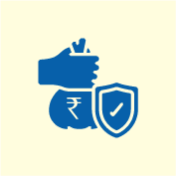 Loan Against Insurance Policy
Loan Against Insurance Policy ESOP Financing
ESOP Financing Easy EMI Loan
Easy EMI Loan Two-wheeler Loan
Two-wheeler Loan Loan for Lawyer
Loan for Lawyer Industrial Equipment Finance
Industrial Equipment Finance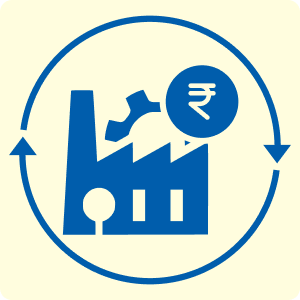 Industrial Equipment Balance Transfer
Industrial Equipment Balance Transfer Industrial Equipment Refinance
Industrial Equipment Refinance Personal Loan Branch Locator
Personal Loan Branch Locator Used Tractor Loan
Used Tractor Loan Loan Against Tractor
Loan Against Tractor Tractor Loan Balance Transfer
Tractor Loan Balance Transfer
 Smartphones
Smartphones Led TVs
Led TVs Washing Machines
Washing Machines Laptops
Laptops Refrigerators
Refrigerators Air Conditioner
Air Conditioner Air Coolers
Air Coolers
 Get Bajaj Prime
Get Bajaj Prime
 Trading Account
Trading Account Open Demat Account
Open Demat Account Margin Trading Financing
Margin Trading Financing Share Market
Share Market Invest in IPO
Invest in IPO All stocks
All stocks Top gainers
Top gainers Top losers
Top losers 52 week high
52 week high 52 week low
52 week low Loan against shares
Loan against shares
 Business Loan
Business Loan Secured Business Loan
Secured Business Loan Loan against property
Loan against property Loans against property balance transfer
Loans against property balance transfer Loan against shares
Loan against shares Home Loan
Home Loan Loans against mutual funds
Loans against mutual funds Loan against bonds
Loan against bonds Loan against insurance policy
Loan against insurance policy
 Term Life Insurance
Term Life Insurance ULIP Plan
ULIP Plan Savings Plan
Savings Plan Family Insurance
Family Insurance Senior Citizen Health Insurance
Senior Citizen Health Insurance Critical Illness Insurance
Critical Illness Insurance Child Health Insurance
Child Health Insurance Pregnancy and Maternity Health Insurance
Pregnancy and Maternity Health Insurance Individual Health Insurance
Individual Health Insurance Low Income Health Insurance
Low Income Health Insurance Student Health Insurance
Student Health Insurance Group Health Insurance
Group Health Insurance Retirement Plans
Retirement Plans Child Plans
Child Plans Investment Plans
Investment Plans
 Apply for Gold Loan
Apply for Gold Loan Transfer your Gold Loan with Us
Transfer your Gold Loan with Us Gold Loan Branch Locator
Gold Loan Branch Locator
 ULIP Plan
ULIP Plan Savings Plan
Savings Plan Retirement Plans
Retirement Plans Child Plans
Child Plans Free Demat Account
Free Demat Account Invest in Stocks
Invest in Stocks Invest in IPO
Invest in IPO Margin Trading Facility
Margin Trading Facility Fixed Deposit Branch Locator
Fixed Deposit Branch Locator

 Bike
Bike Scooter
Scooter Electric Vehicle
Electric Vehicle Best Sellers
Best Sellers Popular Brands
Popular Brands
 Check your Credit Score
Check your Credit Score
 Engagement Zone
Engagement Zone Game Zone
Game Zone
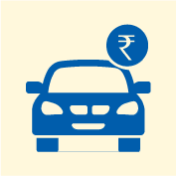 New Car Loan
New Car Loan Used Car Loan
Used Car Loan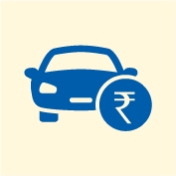 Loan Against Car
Loan Against Car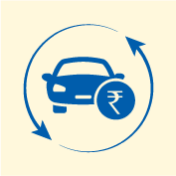 Car Loan Balance Transfer and Top-up
Car Loan Balance Transfer and Top-up

 Personal Loan EMI Calculator
Personal Loan EMI Calculator Personal Loan Eligibility Calculator
Personal Loan Eligibility Calculator Home Loan EMI Calculator
Home Loan EMI Calculator Home Loan Eligibility Calculator
Home Loan Eligibility Calculator Good & Service Tax (GST) Calculator
Good & Service Tax (GST) Calculator Flexi Day Wise Interest Calculator
Flexi Day Wise Interest Calculator Flexi Transaction Calculator
Flexi Transaction Calculator Secured Business Loan Eligibility Calculator
Secured Business Loan Eligibility Calculator Fixed Deposits Interest Calculator
Fixed Deposits Interest Calculator Two wheeler Loan EMI Calculator
Two wheeler Loan EMI Calculator New Car Loan EMI Calculator
New Car Loan EMI Calculator Used Car Loan EMI Calculator
Used Car Loan EMI Calculator All Calculator
All Calculator
 Hot Deals
Hot Deals Clearance Sale
Clearance Sale Kitchen Appliances
Kitchen Appliances Tyres
Tyres Camera & Accessories
Camera & Accessories Mattresses
Mattresses Furniture
Furniture Watches
Watches Music & Audio
Music & Audio Cycles
Cycles Mixer & Grinder
Mixer & Grinder Luggage & Travel
Luggage & Travel Fitness Equipment
Fitness Equipment Fans
Fans
 Personal Loan for Doctors
Personal Loan for Doctors Business loan for Doctors
Business loan for Doctors Medical Equipment Finance
Medical Equipment Finance Secured Business Loan
Secured Business Loan Loan against property
Loan against property Loan against share
Loan against share Gold Loan
Gold Loan Home Loan
Home Loan
 Smartphones
Smartphones LED TVs
LED TVs Washing Machines
Washing Machines Laptops
Laptops Refrigerators
Refrigerators Air Conditioners
Air Conditioners Air Coolers
Air Coolers Water Purifiers
Water Purifiers Tablets
Tablets Kitchen Appliances
Kitchen Appliances Mattresses
Mattresses Furniture
Furniture Music and Audio
Music and Audio Cameras & Accessories
Cameras & Accessories Cycle
Cycle Watches
Watches Tyres
Tyres Luggage & Travel
Luggage & Travel Fitness Equipment
Fitness Equipment Tractor
Tractor
 Home Loan
Home Loan Transfer your existing Home loan
Transfer your existing Home loan Loan against Property
Loan against Property Home Loan for Salaried
Home Loan for Salaried Home loan for self employed
Home loan for self employed Home Loan EMI Calculator
Home Loan EMI Calculator Home Loan eligibility calculator
Home Loan eligibility calculator Home Loan balance transfer
Home Loan balance transfer
 Easy EMI
Easy EMI Offer World
Offer World 1 EMI OFF
1 EMI OFF New Launches
New Launches Zero Down Payment
Zero Down Payment Clearance Sale
Clearance Sale Bajaj Mall Sale
Bajaj Mall Sale
 Articles
Articles
 Overdue Payments
Overdue Payments Other Payments
Other Payments
 Document Center
Document Center Bank details & Documents
Bank details & Documents Tax Invoice Certificate
Tax Invoice Certificate
 Do Not Call Service
Do Not Call Service
 Your Orders
Your Orders Hamara Mall Orders
Hamara Mall Orders

 Fixed Deposit (IFA) Partner
Fixed Deposit (IFA) Partner Loan (DSA) Partner
Loan (DSA) Partner Debt Management Partner
Debt Management Partner EMI Network Partner
EMI Network Partner Become a Merchant
Become a Merchant Partner Sign-in
Partner Sign-in
 Faster, Easier Gold Loan
Faster, Easier Gold Loan Digi Sarkar
Digi Sarkar Used Tractor Loan
Used Tractor Loan Check Loan Offer
Check Loan Offer Mobiles on EMI
Mobiles on EMI Live Videos
Live Videos



















